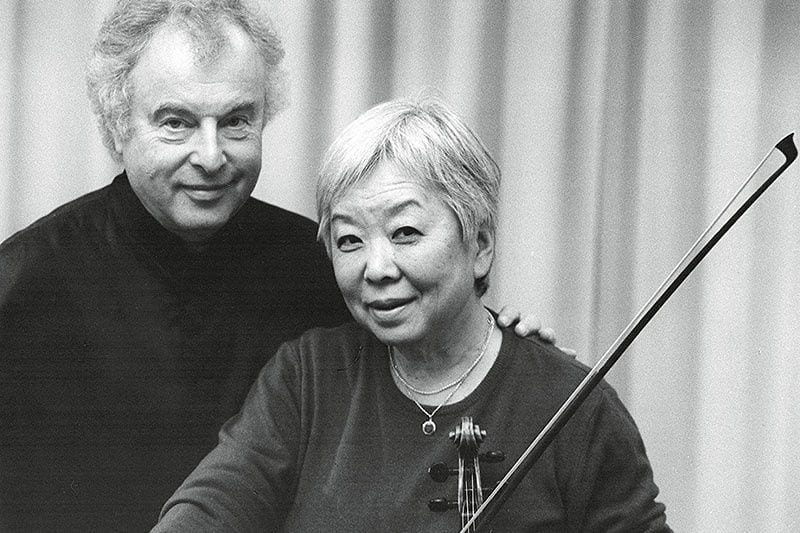
Recital recordings can often reflect idol worship at the expense of narrative cohesion. Classical musicians prize Bach, Beethoven, Chopin, Tchaikovsky and nearly everyone else in the established canon, hence their endless programmability on the stage and the stereo. Still, finding substantial connections between composers and repertoire, something beyond a relatively simple “greatest hits” compilation of sorts, isn’t always valued by modern day performers. With Bach, Busoni, Beethoven violinist Yukko Shiokawa and pianist András Schiff draw a line from Baroque stateliness to Romantic introspection using Busoni as the connective guide.
With four movements paired in slow-fast-slow-fast sequence, J.S. Bach’s Sonata No. 3 in E Major exemplifies how crucial subtlety can be. Shiokawa sustains her melodies in the opening “Adagio” like an endless strand of gold string, growing in conviction as the phrases begin and gently tapering off as they conclude. Likewise, the subsequent “Allegro” is packed with gestural moments where she deftly demonstrates her nuance for articulation and attack. All the while Schiff finds the balance between the steady drive of his left hand with a light and poised attack of his right.
A sorrowful melody trades back and forth between violin and piano on third movement “Adagio, ma non tanto”. Both Shiokawa and Schiff are graceful with their phrasing and dialogue, yet their balance doesn’t seem to ever find a proper footing. It’s unclear whether it’s related to their performance or the final recording mixing, but there always seems to be an overwrought soloist–accompanist hierarchy between the violin and the piano, and it tends to mute the graceful intermingling between the two voices. The concluding “Allegro” is a joyous rampage of sixteenth notes that display Shiokawa and Schiff at their most exuberant state throughout the entire work.
With his extensive essays, commentary, and transcriptions, the Italian Ferruccio Busoni is irrevocably linked to the keyboard music of J.S. Bach. Nonetheless, there’s an urgency in Busoni’s own compositions that move them beyond any Baroque-worship. His Sonata No. 2 in E Minor is an extended affair, a complex stream-of-consciousness work that wavers from dissonant rumblings to soaring victorious flights. Shiokawa and Schiff meditate on the work’s involved nature in the opening “Langsam” while infusing the following “Presto” with a wealth of energy to keep it dancing.
Busoni, nonetheless, acknowledges Bach’s influence in a notably grandiose way with the concluding “Andante con moto,” a 17-minute theme and variation set based upon the chorale “Wie wohl ist mir, o Freund Der Seelen, wenn ich in deiner Liebe ruh.” Using Bach’s chorale as source material Shiokawa and Schiff explore songs and dances, examining the both the damned and the divine in Busoni’s exploration of harmony and melody. The musical interpretation is relatively straightforward, a celebration of the music that doesn’t over-glorify overtly romantic sentiments. Intimacy is valued.
Likewise, Beethoven’s composed his Sonata No. 10 in G Major with ample consideration for similar intimate musical moments. Pierre Rode, the French violinist intended for the work’s premiere, was well known for his touch and musical sensitivity, so all likelihood points to his presence as a standing influence on the composition’s sensibility. Being the last of Beethoven’s violin sonatas, however, points to the influence of maturity and introspection on the sonata’s complex depth.
Shiokawa and Schiff deliver a fine reading of the work, emotive yet not too dramatic. The dynamic range feels slightly compressed when compared to the rest of the record–the highs aren’t as high, and the lows don’t drip down to what we’ve already heard. That’s not to say their performance isn’t effective; rather, it’s more revealing of a duo who clearly understand both what this work is and how to deliver an honest interpretation. The two are longtime musical partners, and their connection is perhaps best reflected in their balanced and reserved performance of Beethoven’s work.

